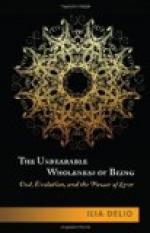The so-called fetichist, too, whose passion is roused by indifferent objects which belonged, or might belong, to the beloved, or in fact to any woman, is a variant of the slave of love. The classical representative of fetichism is the mediaeval knight who carried a handkerchief, a glove, or any other article of clothing belonging to his lady, next to his heart, thus believing himself proof against evil influences. There we see already spiritual love groping for material objects in order to gain earthly support; not every man is a Dante, not every man is capable of keeping his soul free from the taint of this earthly sphere. But even the “plait-cutter,” so well known to the reader of newspapers, the collector of garters, and similar desperadoes, require a relic, a fetich which they apparently worship. To the same category belongs the idolatrous cult which some men, especially artists—but also madmen—practise with female pictures and statues (more especially with heads). In this case the fundamental feeling of the love of beauty, which we know as an essential factor of purely spiritual eroticism, is made to serve sensual purposes. The desired illusion of spiritual worship is facilitated, and is protected from self-revelation, owing to the fact that a painted head rouses in the normal individual no passion, but inspires him with purely spiritual sentiments.
I have briefly touched on this subject because my theory of the two roots of eroticism permits of a new, and in my opinion plausible, explanation of erotic perversions; one might even go as far as to say that the existence of perversions follows as a necessary consequence; that they must exist because it obviously cannot always be possible to maintain a harmonious balance of sensuality and love. This chapter is therefore a necessary supplement to the previous ones in which the perfection of modern love is dealt with. The seeker of love and the slave of love are phenomena of dualistic eroticism incapable of attaining to unity. For this reason they neither existed in antiquity, nor do we find genuine examples of them in the female sex. All female perversions closely examined are hysteria—that is to say, want of inner balance—in various forms; a woman’s subjection to the will of a man is in very many instances a natural symptom, and cannot be regarded as perverse. And thus we again perceive that the eroticism of woman is more harmonious and natural than that of the eternally groping and eternally erring man.
CHAPTER IV
THE REVENGE OF SEXUALITY
The Demoniacal and the Obscene




